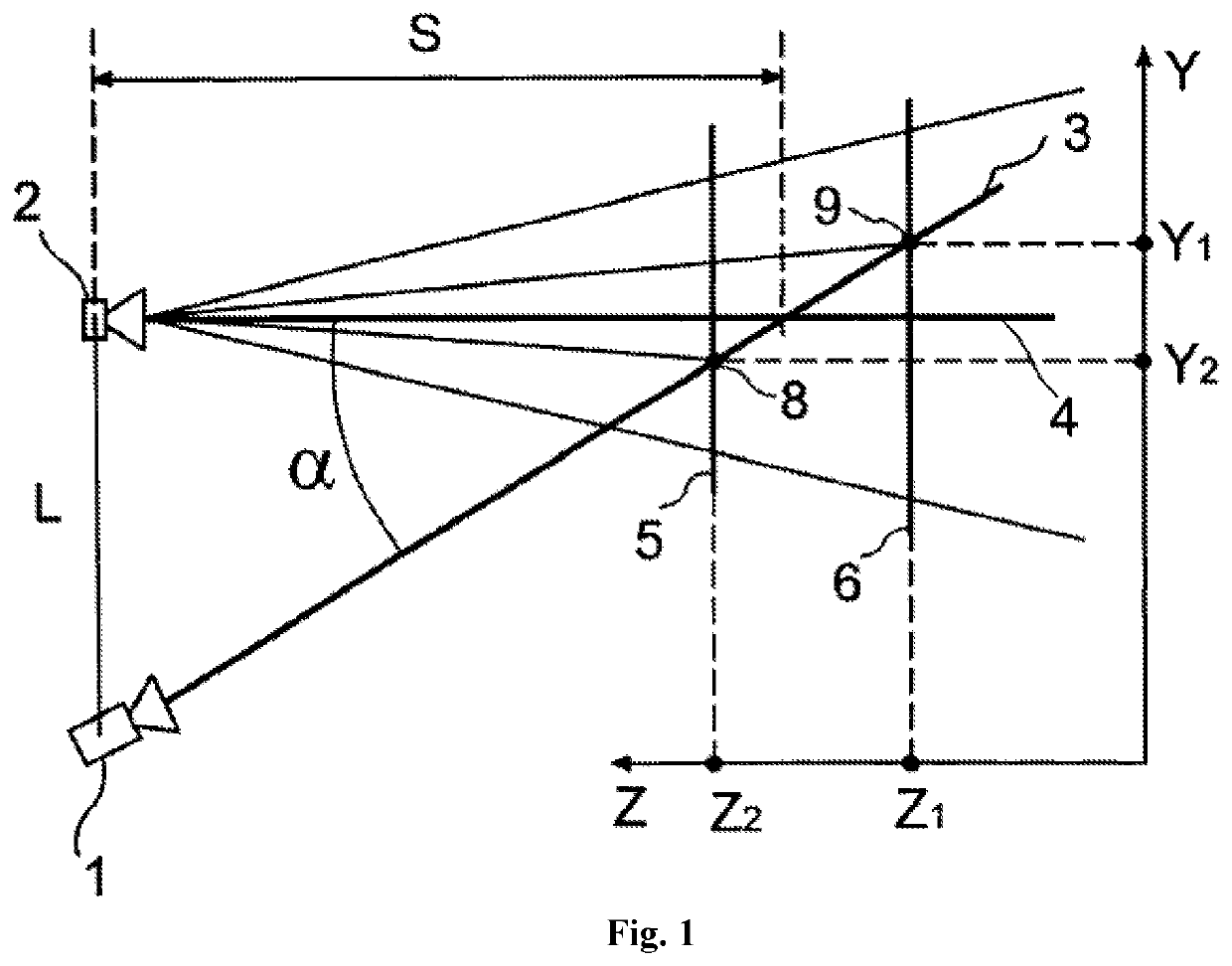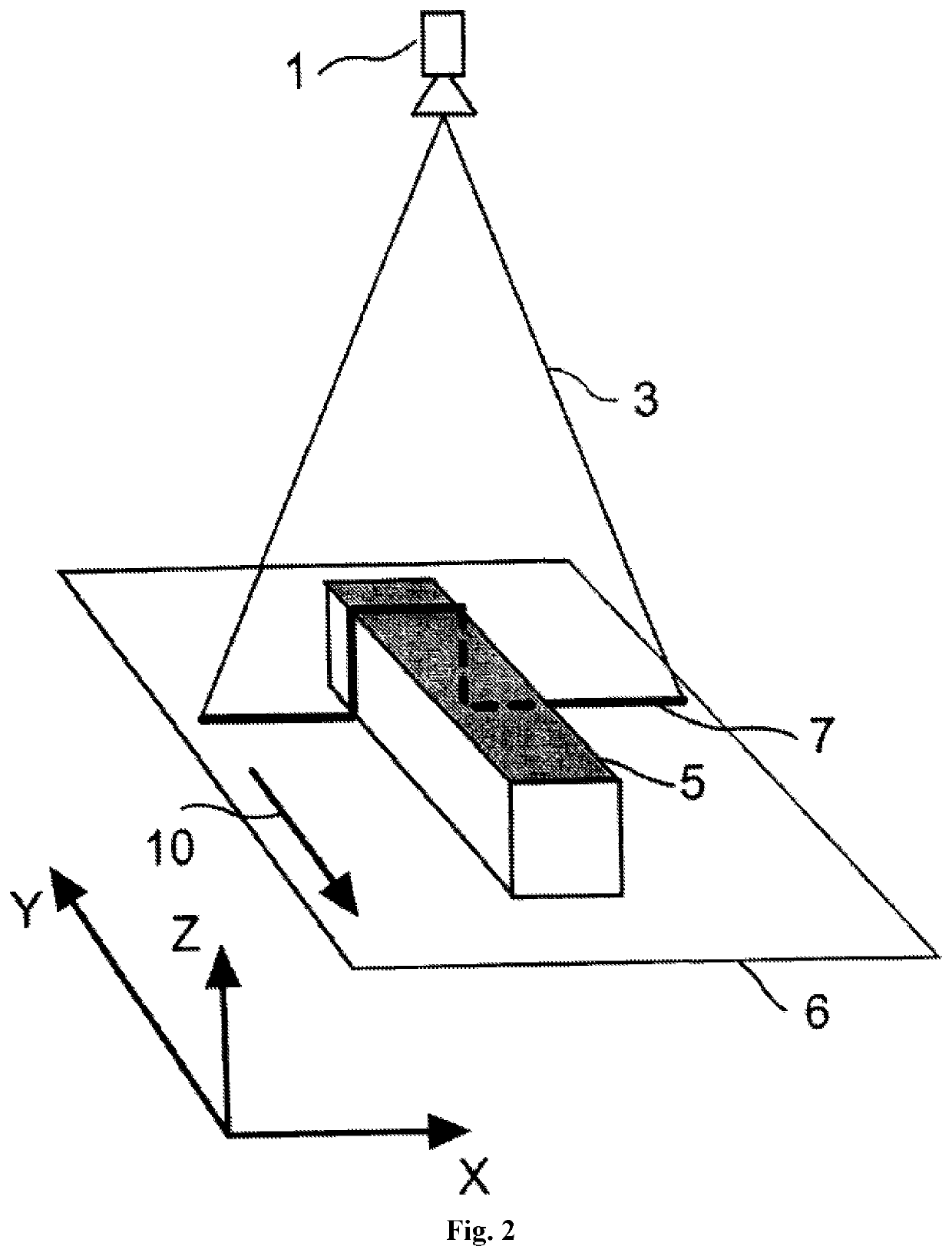Method for monitoring linear dimensions of three-dimensional objects
a three-dimensional object and linear measurement technology, applied in the field of measuring instruments, can solve the problems of inability to foresee or take into account in advance image distortion, poor accuracy, and limitations of the previously used method and the device use, and achieve the effect of expanding the range of methods and effective and efficient methods
- Summary
- Abstract
- Description
- Claims
- Application Information
AI Technical Summary
Benefits of technology
Problems solved by technology
Method used
Image
Examples
Embodiment Construction
[0029]FIG. 1 shows a device comprised of projection unit 1 which projects the predetermined image onto the object and the camera 2 recording and transmitting to the computer (not shown) the light emitted by projection unit 1 and reflected from the object, at a certain triangulation angle α (angle between the central beam of the projection unit 3 and central beam 4 of camera 1.
[0030]The distance L between the camera and the projection unit is called the base. The base can be chosen as follows.
[0031]L=s*tg α, where s is the distance from the projection unit to the intersection point of the central beams of the projection unit and the camera (m).
[0032]In the simplest case, projection unit 1 projects one horizontal band 3 which coincides with the central beam of the projection unit in FIG. 1. FIG. 2 is a view from camera 2. FIG. 2 shows the way band 3 is distorted due to the curvature of the object shown as planes 5 and 6, and a trace 7 of the reflected band 3 is seen in the image of ca...
PUM
 Login to View More
Login to View More Abstract
Description
Claims
Application Information
 Login to View More
Login to View More - R&D
- Intellectual Property
- Life Sciences
- Materials
- Tech Scout
- Unparalleled Data Quality
- Higher Quality Content
- 60% Fewer Hallucinations
Browse by: Latest US Patents, China's latest patents, Technical Efficacy Thesaurus, Application Domain, Technology Topic, Popular Technical Reports.
© 2025 PatSnap. All rights reserved.Legal|Privacy policy|Modern Slavery Act Transparency Statement|Sitemap|About US| Contact US: help@patsnap.com



